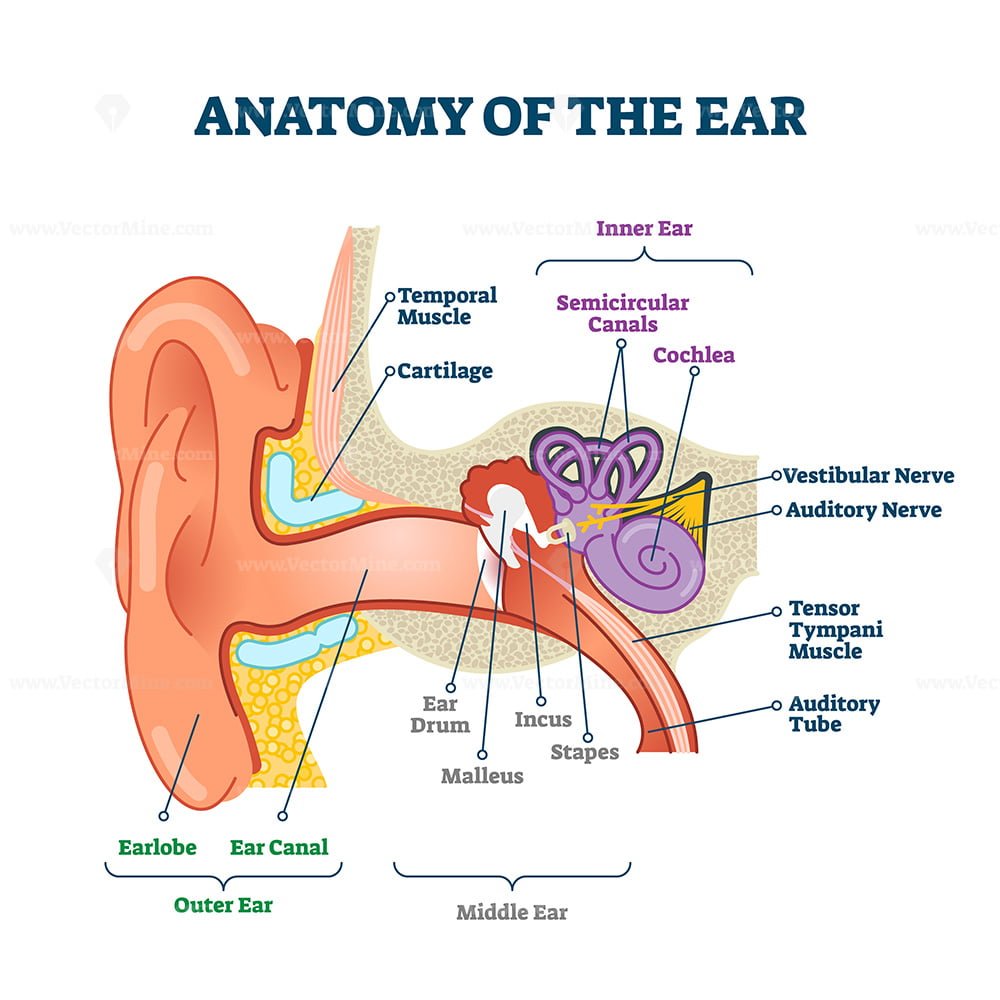
Anatomy of the ear, labeled health care vector illustration diagram VectorMine
The ear can be divided into three parts; external, middle and inner.This article will focus on the anatomy of the external ear - its structure, neurovascular supply and clinical correlations. The external ear can be divided functionally and structurally into two parts; the auricle (or pinna), and the external acoustic meatus - which ends at the tympanic membrane.
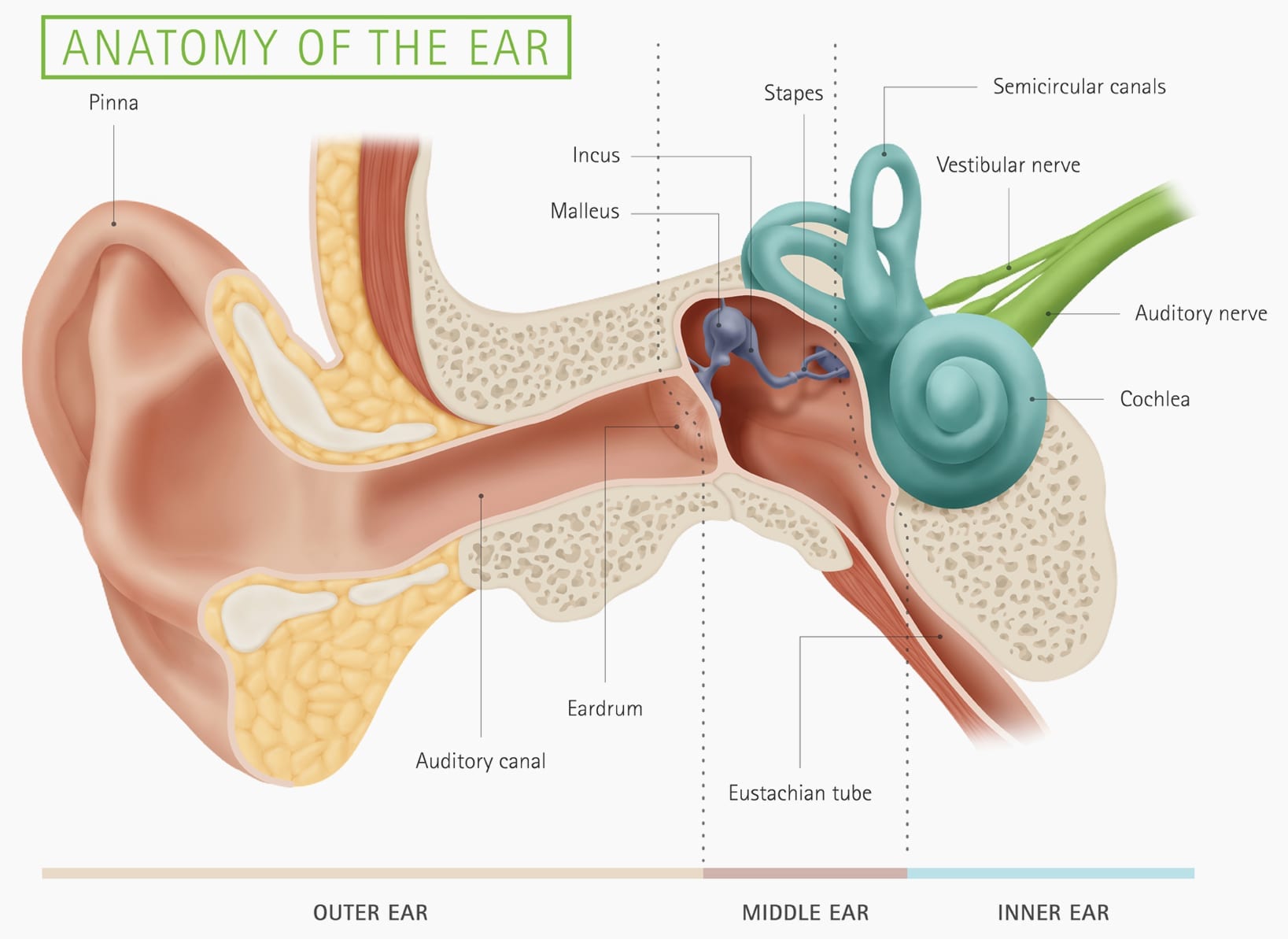
Your Hearing Heritage Hearing
The outer ear consists of the visible portion called the auricle, or pinna, which projects from the side of the head, and the short external auditory canal, the inner end of which is closed by the tympanic membrane, commonly called the eardrum. The function of the outer ear is to collect sound waves and guide them to the tympanic membrane.
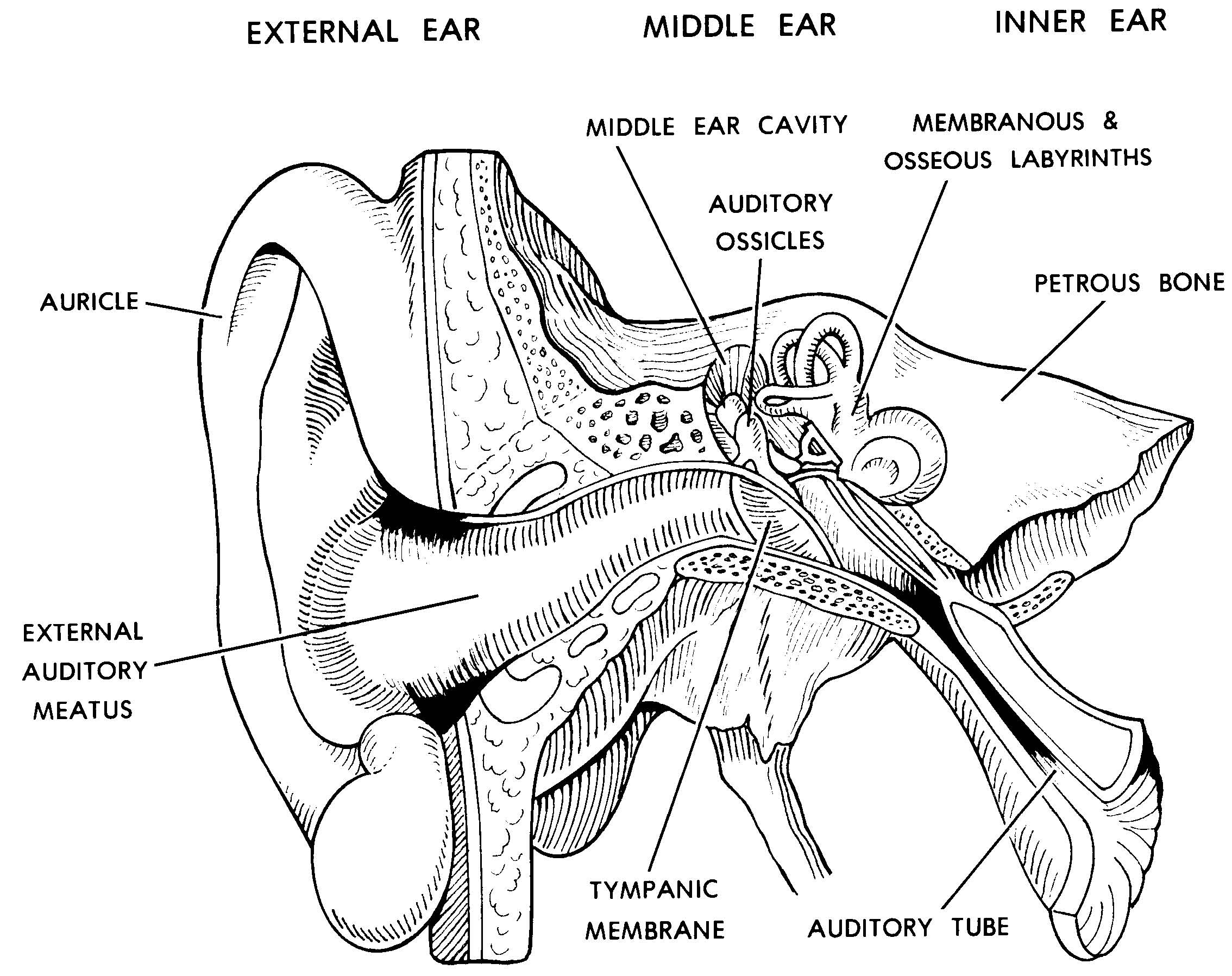
Images 11. Nervous System Basic Human Anatomy
The middle ear includes the eardrum, malleus, incus, and stapes. The inner ear includes semicircular canals, eustachian tube, cochlea, and vestibule and auditory nerves.">.
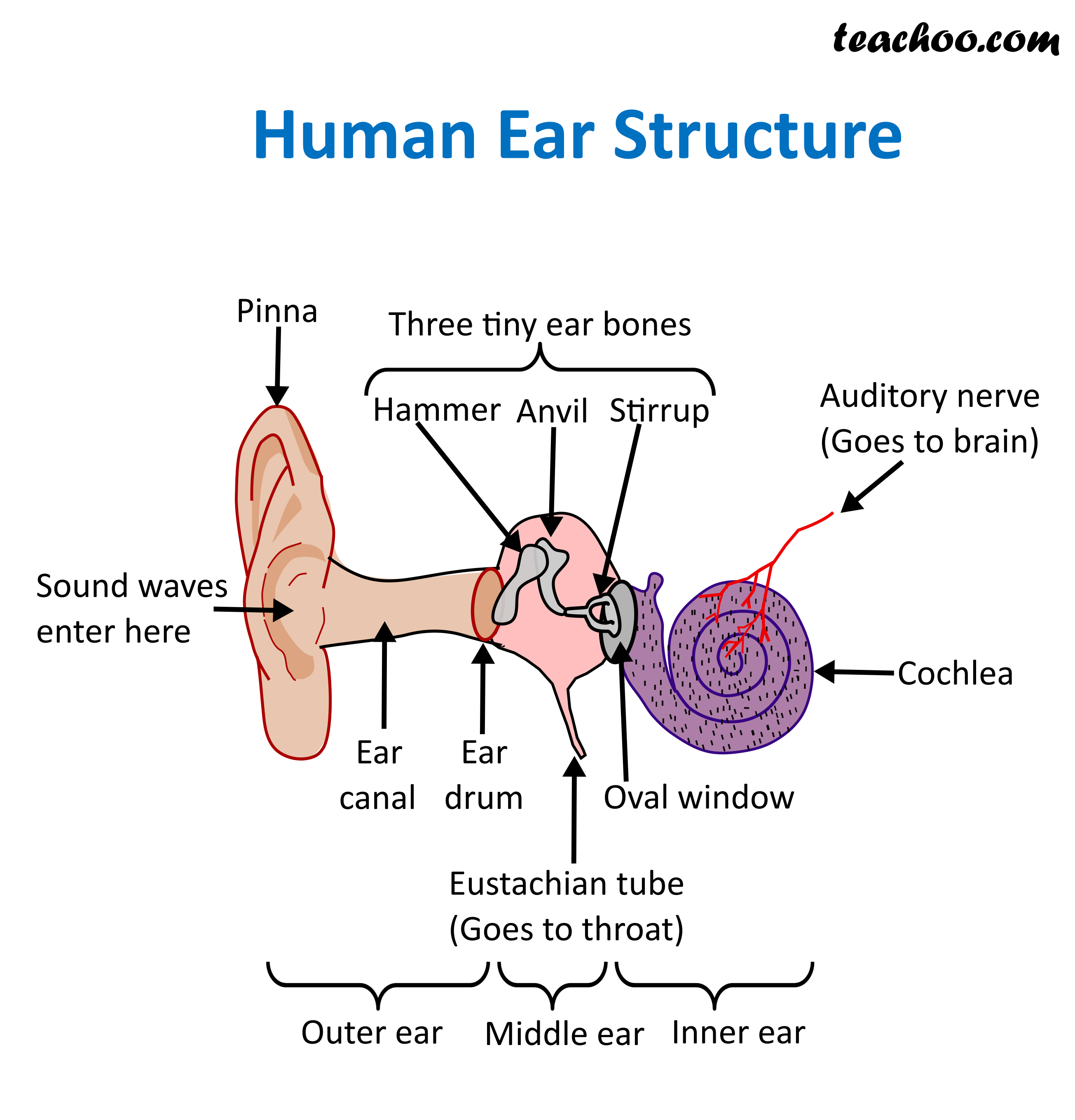
Structure and Function of Human Ear with Diagram Teachoo
Anatomy Structure The ear is made up of the outer ear, middle ear, and inner ear. The inner ear consists of the bony labyrinth and membranous labyrinth. The bony labyrinth comprises three components: Cochlea: The cochlea is made of a hollow bone shaped like a snail and divided into two chambers by a membrane.

How The Ear Works
Helix: The outermost curvature of the ear, extending from where the ear joins the head at the top to where it meets the lobule. The helix begins the funneling of sound waves into the ear; Fossa, superior crus, inferior crus, and antihelix: These sections make up the middle ridges and depressions of the outer ear. The superior crus is the first ridge that emerges moving in from the helix.
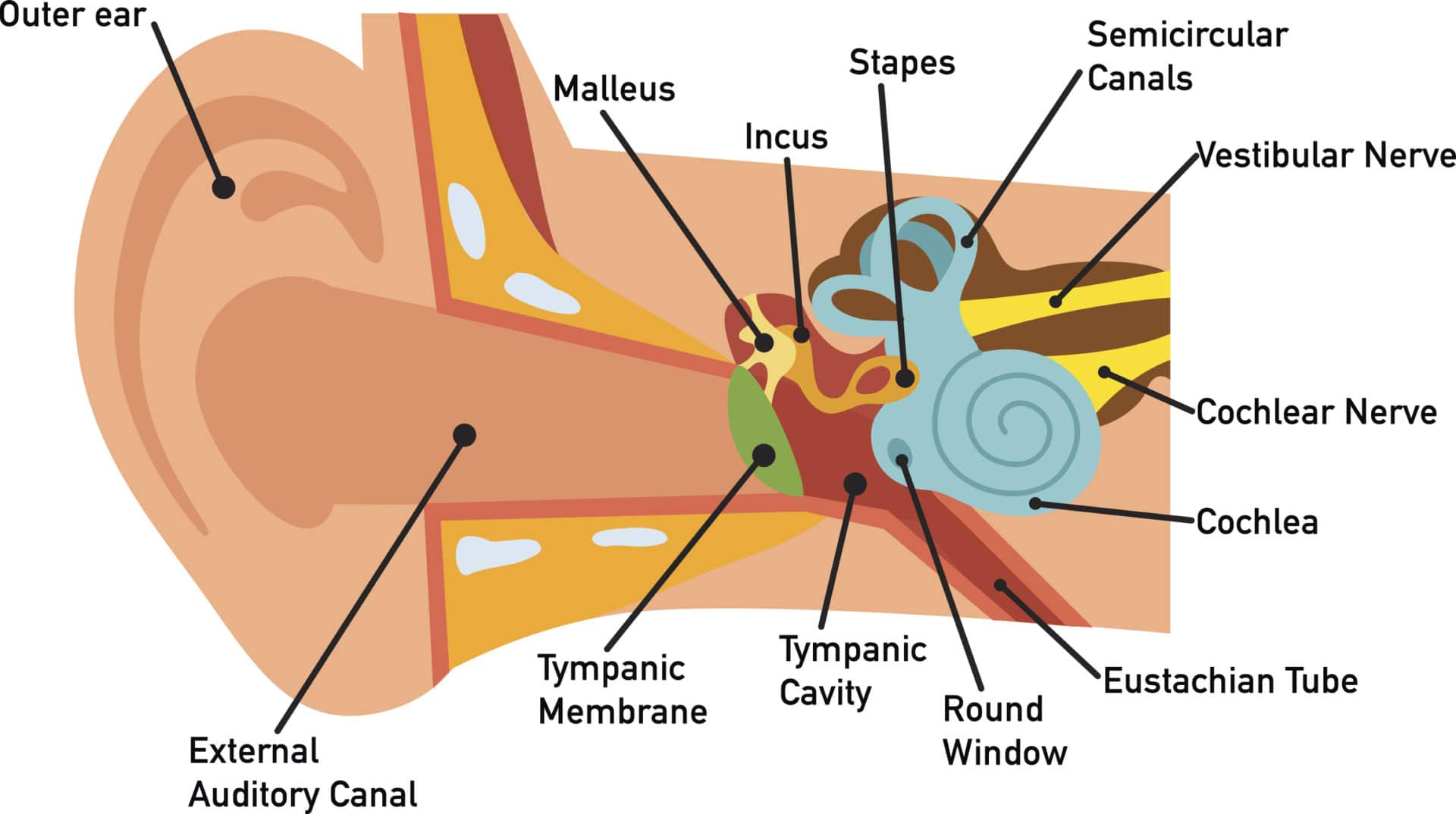
How You Hear Northland Audiology
outer ear canal - the tube through which sound travels to the eardrum. pinna - (also called the auricle) the visible part of the outer ear. It collects sound and directs it into the outer ear canal. semicircular canals - three loops of fluid-filled tubes that are attached to the cochlea in the inner ear. They help us maintain our sense of balance.
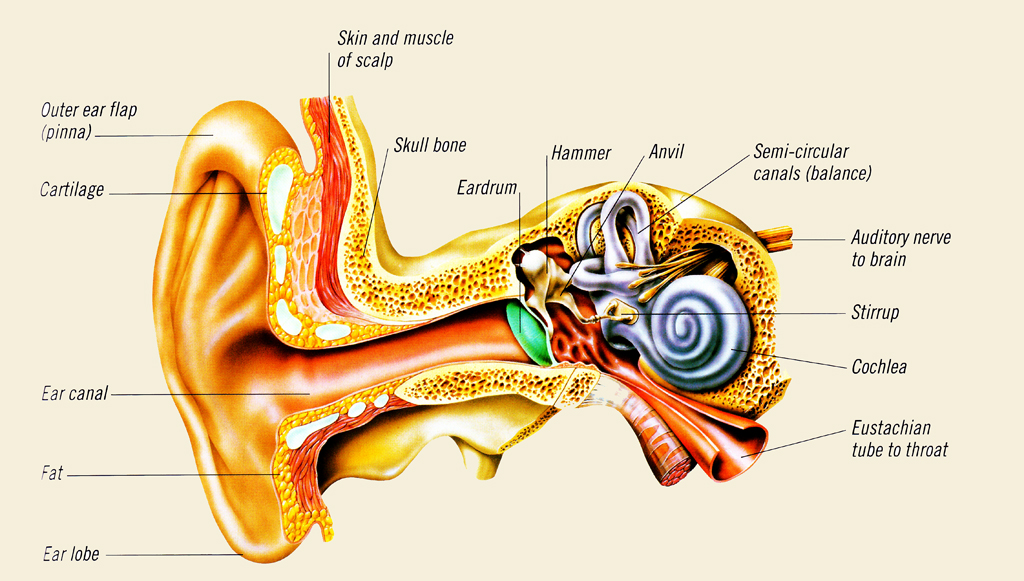
Discovering Something New ongoing learning How the ear works
Ear diagrams (labeled and unlabeled) Overview image showing the structures of the outer ear and auditory tube Take a moment to look at the ear model labeled above. This shows you all of the structures you've just learned about in the video, labeled on one diagram.
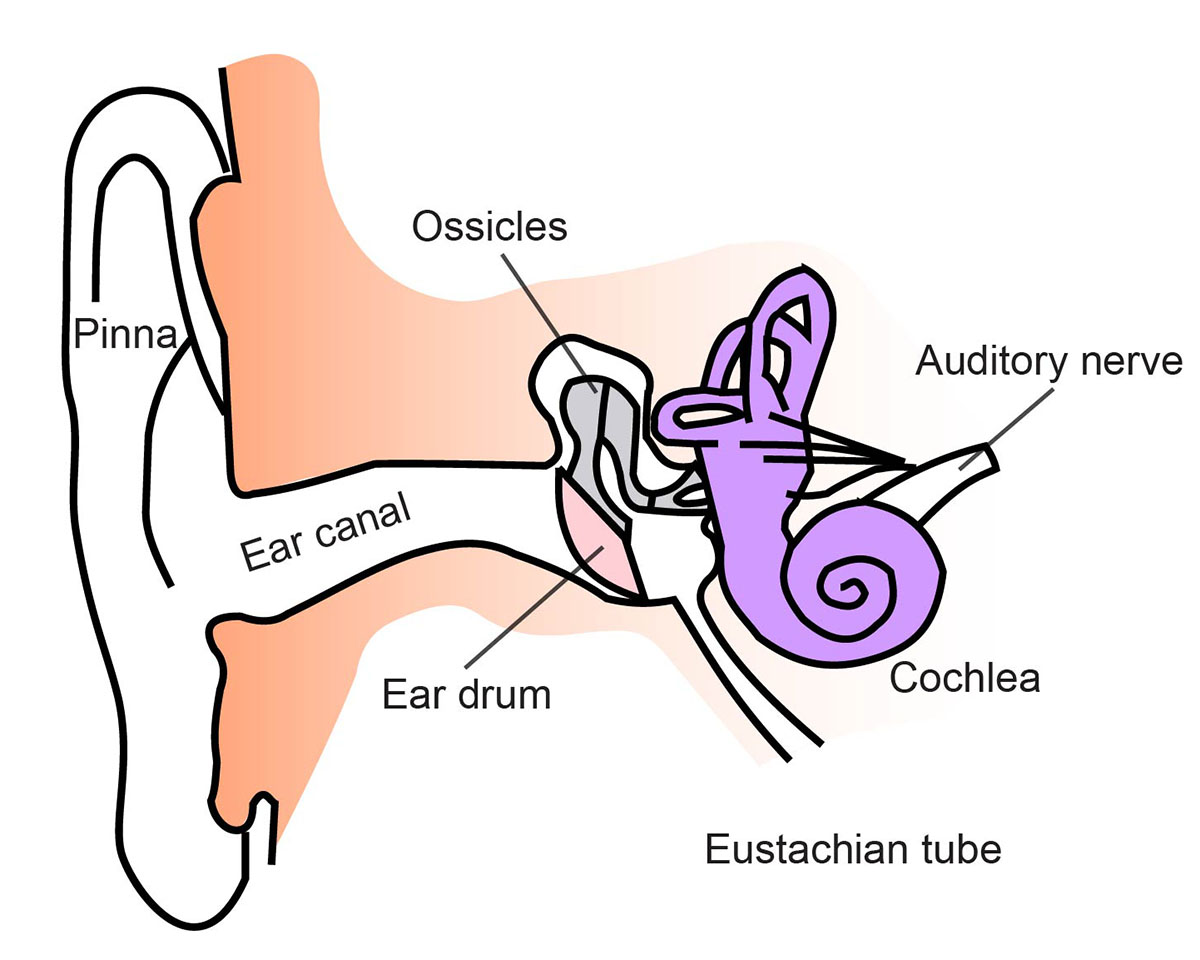
ear anatomy diagram labeled
The inner ear is the innermost part of the ear and consists of the cochlea, auditory nerve, vestibule and semicircular canals. The inner ear is a maze of tubes and passages, referred to as the labyrinth. The inner ear is mainly responsible for balance and detecting sound. The cochlea contains the cells responsible for hearing, the auditory.

15.3 Hearing Anatomy & Physiology
EAR CANAL The ear canal starts at the outer ear and ends at the ear drum. The canal is approximately an inch in length. The skin of the ear canal is very sensitive to pain and pressure. Under the skin the outer one third of the canal is cartilage and inner two thirds is bone. EAR DRUM
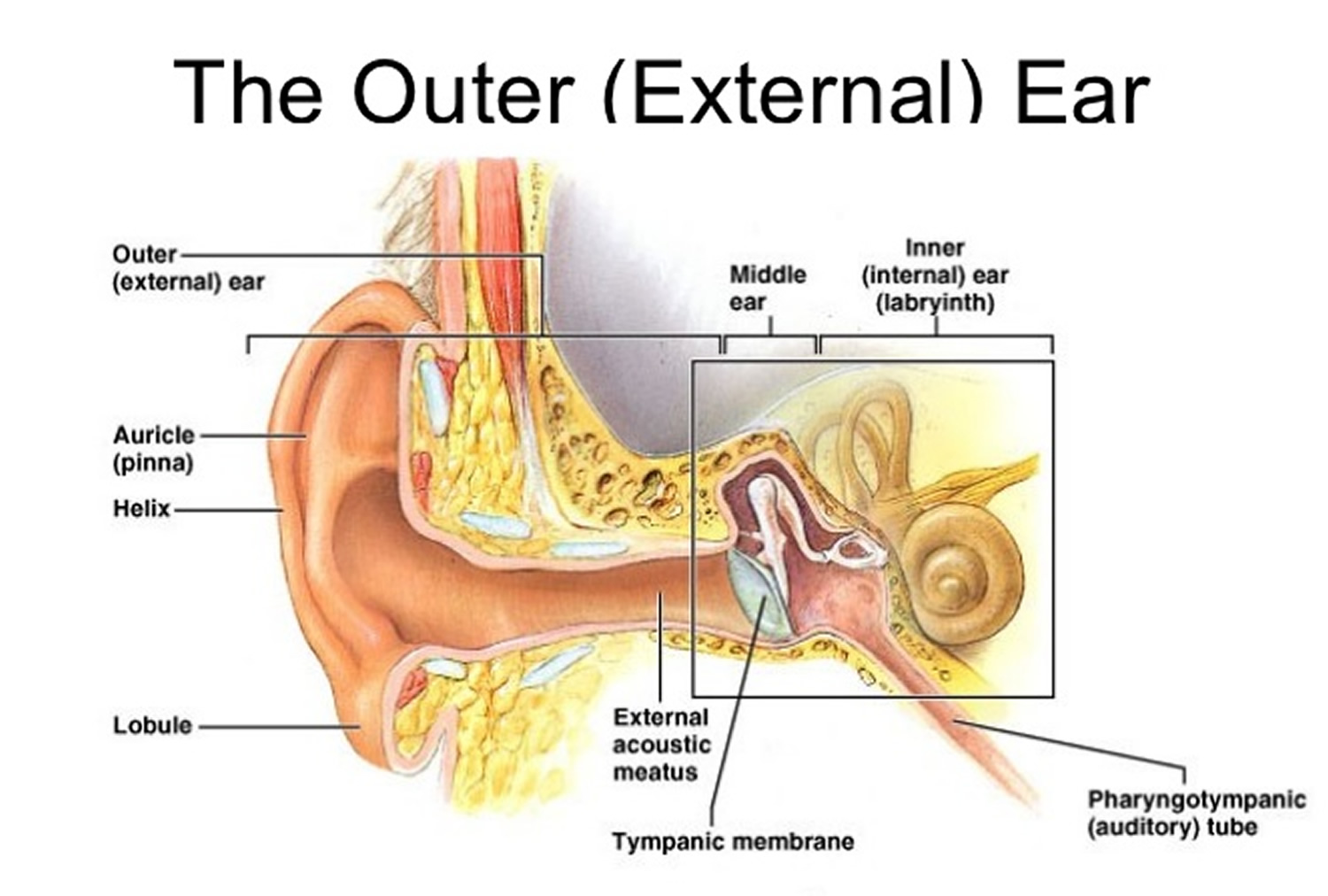
Outer Ear Anatomy Outer Ear Infection & Pain Causes & Treatment
Overview Your outer ear and middle ear are separated by your eardrum, and your inner ear houses the cochlea, vestibular nerve and semicircular canals (fluid-filled spaces involved in balance and hearing). What is the ear? Your ears are organs that detect and analyze sound. Located on each side of your head, they help with hearing and balance.
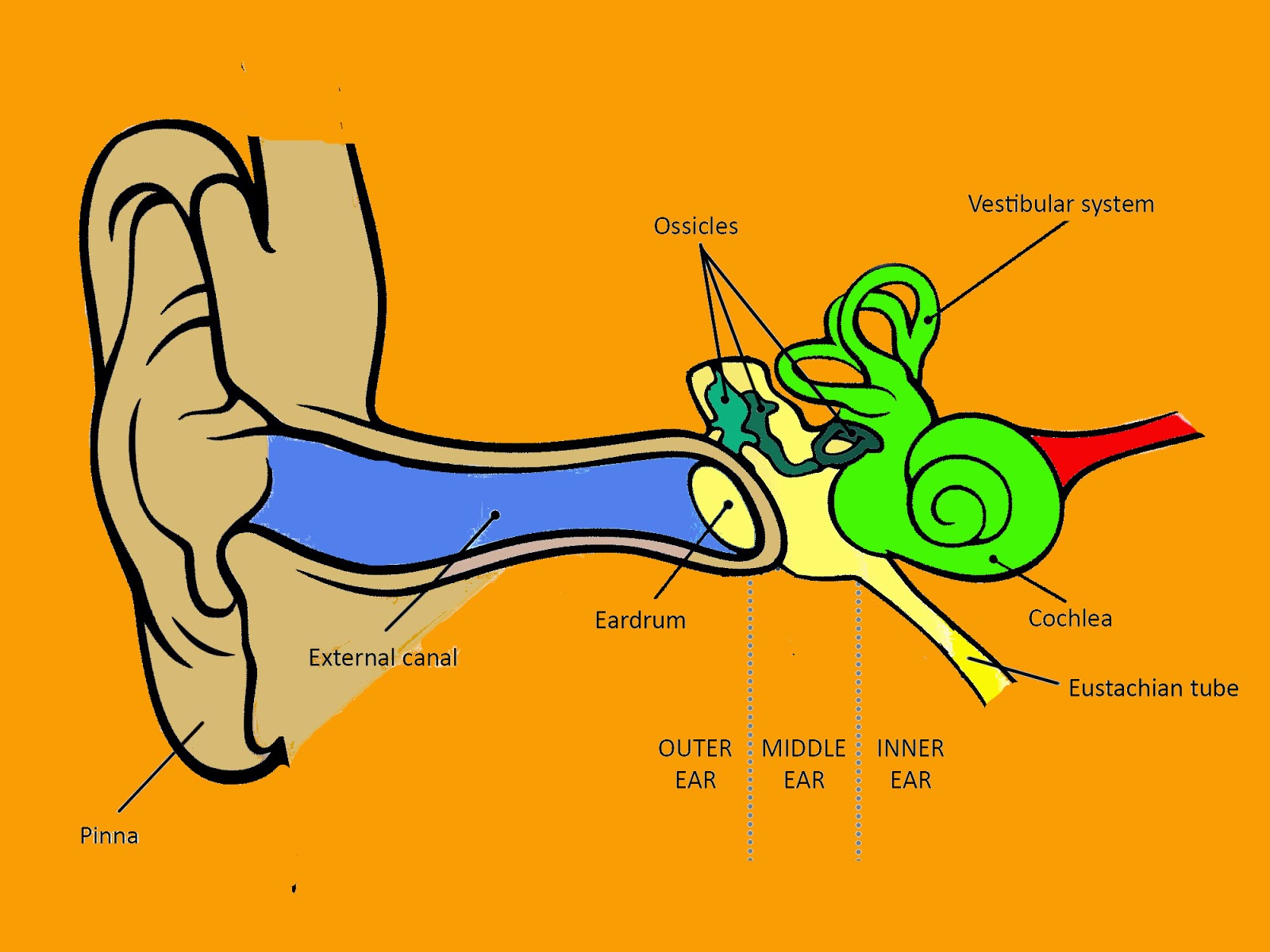
HEARING ANATOMY AND PROCESS AUDIOLOGIS
The ear canal, or auditory canal, is a tube that runs from the outer ear to the eardrum. The ear has outer, middle, and inner portions. The ear canal and outer cartilage of the ear make.
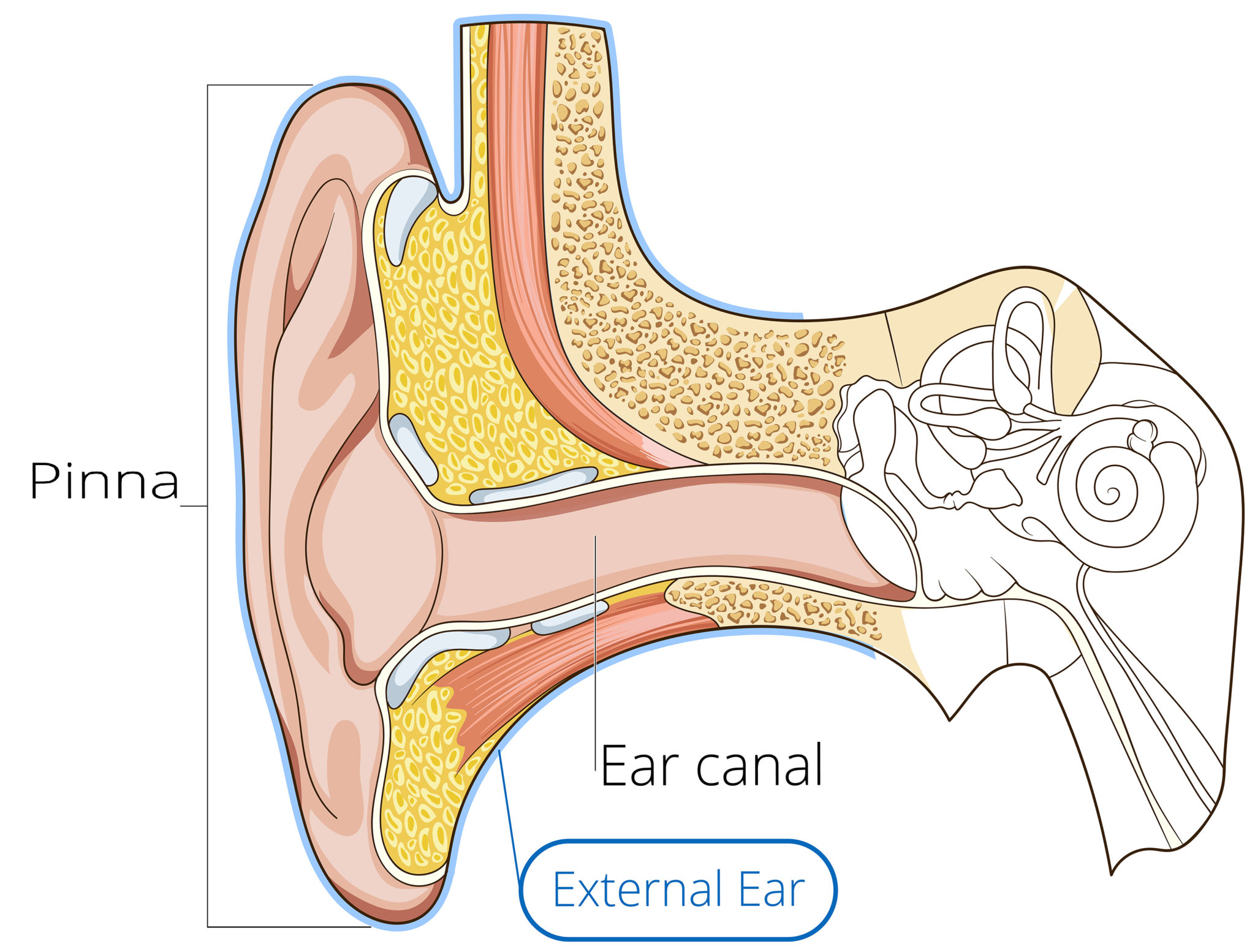
Ear Anatomy Causes of Hearing Loss Hearing Aids Audiology
A brief description of the human ear along with a well-labelled diagram is given below for reference. Well-Labelled Diagram of Ear The External ear or the outer ear consists of Pinna/auricle is the outermost section of the ear. The external auditory canal links the exterior ear to the inner or the middle ear.
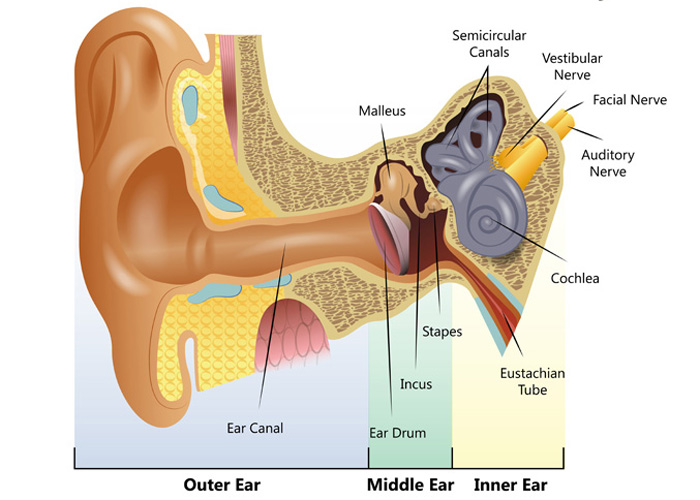
Understanding how the ear works Hearing Link Services
So as the air vibrates even the ear drum starts vibrating. Just like the skin of a drum. And as you can, the ear drum also separates the outer ear from the middle ear. This brings us to the middle ear. The middle ear consists of the three tiniest bones of the human body. And they're together the are called the ossicles. And they have pretty.

The Anatomy of the Outer Ear Health Life Media
Here is a blank human ear diagram for you to label, so that you can memorize the different parts of this vitally necessary organ, for good.
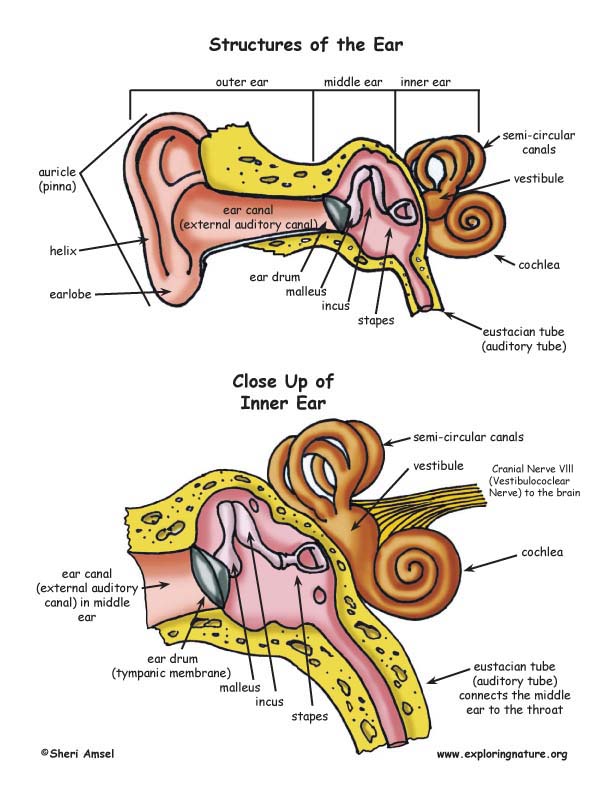
Hearing and the Structure of the Ear
Ear Anatomy, Diagram & Pictures | Body Maps Human body Head Ear Ear The ears are organs that provide two main functions — hearing and balance — that depend on specialized receptors called.
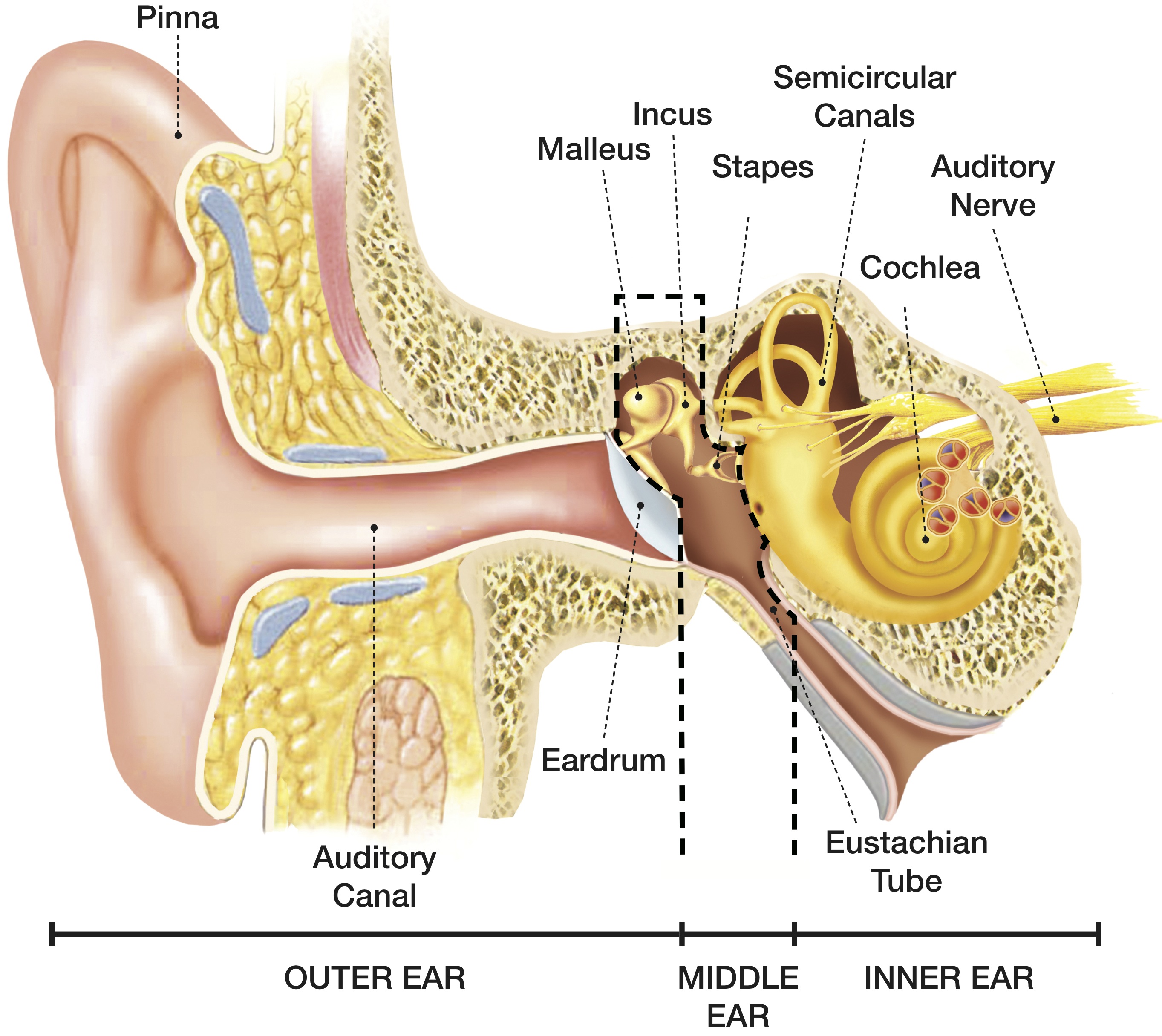
How We Hear Hearing Associates, Inc.
Ear anatomy can vary. In addition to normal and relatively minor differences, there are a number of more significant and impactful variants. For instance, on the auricle, attachment—or lack thereof—of the earlobe to the face is a frequently seen genetic variation, with attached earlobes seen in anywhere from 19% to 54% of the population..